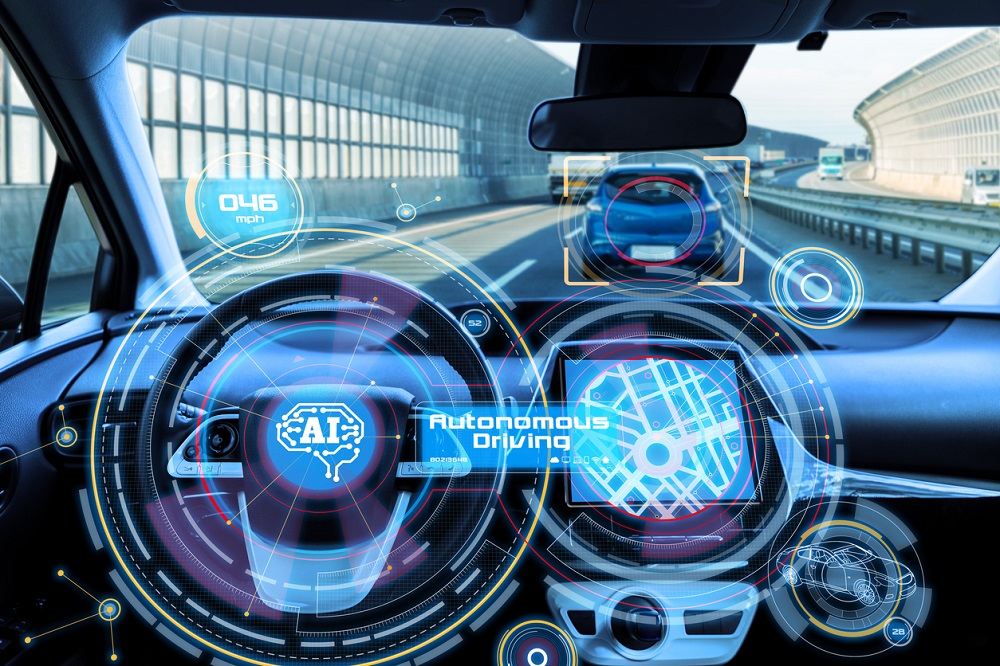The rapid development of autonomous vehicles depends on artificial intelligence. Modern self-driving cars use advanced artificial intelligence systems to navigate the roads safely and efficiently. Understanding how artificial intelligence works in self-driving cars can help us understand the technology’s potential and impact on transportation.
1. Understand Autonomous Vehicles:
Self-driving cars can drive autonomously. Sensors, cameras and artificial intelligence algorithms help them detect, decide and follow routes. The cars are designed to increase safety, reduce traffic and increase traffic efficiency.
2. Artificial Intelligence/Perception:
The perception of artificial intelligence underlies self-driving cars. Self-driving cars use lidar, radar and cameras to obtain environmental data. Artificial intelligence systems use this sensory data to identify people, vehicles, road signs and lane markings.
To identify road signs and hazards on the road, artificial intelligence systems use computer vision to evaluate camera images. Machine learning algorithms are trained on huge data sets to discover trends and predict the behavior of objects and road users. Vehicles need this perception to make immediate decisions and respond to changing road conditions.
3. Use Artificial Intelligence to Make Decisions:
Artificial intelligence makes judgments based on data collected and analyzed by self-driving cars. Prepare and implement driving strategies to navigate the roads safely and efficiently. The AI system evaluates vehicle speed, distance to objects, traffic rules and hazards.
Based on traffic signs and vehicle behavior, AI systems must decide whether to continue, stop or yield at an intersection. The vehicle must also anticipate pedestrians and cyclists and adjust its trajectory. Safe and smooth driving requires complex calculations and on-the-fly adjustments to decisions.
4. Localization/Artificial Intelligence:
Another important feature of self-driving cars is accurate positioning. Determining a vehicle’s position on the road is critical for navigation and route planning. Artificial intelligence uses GPS, maps and sensor data to accurately locate the car.
High-definition maps show road geometry, lane markings and traffic signals to artificial intelligence systems. By comparing real-time sensor data with these maps, artificial intelligence can correct inconsistencies and keep the vehicle on track. This allows the car to adapt to road conditions and unexpected obstacles.
5. Security and Artificial Intelligence:
Safe operation is the prerequisite for self-driving cars, and artificial intelligence can help with this. AI systems can detect and respond to road hazards, including sudden obstacles or erratic behavior. They continuously scan the vehicle’s surroundings and make quick decisions to avoid collisions and maintain a safe distance.
Redundant systems and fail-safe devices improve the safety of autonomous vehicles. If one sensor fails, the others can compensate to maintain operation. To detect and mitigate hazards, AI algorithms are carefully tested using simulations and real data. This holistic approach creates confidence in the safety and reliability of autonomous vehicles.
6. Traffic Management/Artificial Intelligence:
Artificial intelligence can have an impact on traffic management beyond vehicle operations. Vehicle-to-everything (V2X) technology allows autonomous vehicles to connect to each other and infrastructure. This connectivity allows cars to share speed, location and intent, improving traffic flow and reducing congestion.
Artificial intelligence can optimize the timing of traffic lights and reduce waiting times for self-driving vehicles at intersections. This coordinated strategy can improve the use of road infrastructure and traffic patterns.
7. Ethics and Regulations:
The development and deployment of autonomous vehicles raises ethical and regulatory issues. Artificial intelligence must be programmed to comply with laws and social norms. This involves dealing with situations where the car has to make split-second decisions about safety and other factors. Regulatory regimes are adapting to the challenges of autonomous vehicles. Governments and regulators are developing standards for testing and deploying autonomous vehicles. These regulations require autonomous vehicles to meet safety and performance standards while addressing ethical issues, including decision-making and responsibility.
Conclusion:
The role of artificial intelligence in self-driving cars is driving the development of transportation technology. Artificial intelligence is changing the way we travel and imagine mobility by enabling vehicles to observe, make decisions and drive independently. Realizing the full potential of autonomous vehicles and integrating them into our daily lives will require continued innovation and collaboration.
FAQs:
1. Will Artificial Intelligence Help Locate Self-Driving Cars?
Artificial intelligence uses GPS, high-definition maps and sensor inputs to locate autonomous vehicles on the road. Artificial intelligence systems coordinate real-time and mapping data to ensure accurate positioning. This helps the car navigate and adapt to road conditions.
2. What are the artificial intelligence-based safety measures for self-driving cars?
To prevent malfunctions, self-driving cars use artificial intelligence systems with redundant sensors and failsafes. Carefully validate AI algorithms using simulations and real data to detect and fix problems. Self-driving vehicles also scan their surroundings and make quick decisions to avoid collisions and maintain a safe distance from other drivers.
3. How does artificial intelligence affect autonomous vehicle traffic management?
Artificial intelligence will impact traffic management by allowing autonomous vehicles to connect to each other and to infrastructure systems through vehicle-to-everything (V2X) technology. This connectivity allows vehicles to share speed, location and intent, optimizing traffic flow and reducing congestion. Artificial intelligence can coordinate movements at intersections and improve the timing of traffic lights, making roads more efficient.
4. What are the ethical issues involved in developing artificial intelligence for self-driving cars?
It is ethical to program artificial intelligence into self-driving cars to follow social norms and laws. This requires responding to situations where the car has to choose between safety and other variables. Addressing ethical issues and building public trust requires openness, honesty and responsibility in AI decision-making.
5. What impact will artificial intelligence have on self-driving cars?
Artificial intelligence algorithms, sensor technology and connected vehicles are expected to improve the functionality and reliability of autonomous vehicles. As technology advances, the use of autonomous vehicles will increase, making transportation safer and more efficient and potentially changing the way we travel.



